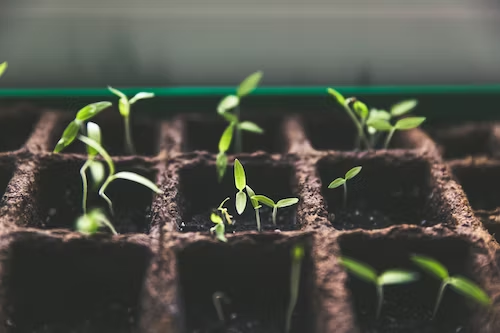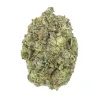Guaiol, a lesser-known terpene with promising potential and unique properties, has been garnering interest in the realm of natural compounds.
In this article, we delve into the frequently asked questions about guaiol, its diverse effects, and its presence in various botanical sources, with a special focus on its relationship with cannabis. From its molecular structure to its potential impacts on health and well-being, we'll uncover the essential aspects of this intriguing compound.
What is the Guaiol Terpene?
Guaiol is a terpene found in certain cannabis strains, as well as in the wood of select pine varieties and the tropical guaiacum plant. It is responsible for producing a unique aroma characterized by notes of pine, wood, fruit, and rose.
This lesser-known terpene distinguishes itself by its liquid structure, in contrast to the typically oil-based nature of most terpenes.
Guaiol offers a range of potential health benefits that extend beyond its aromatic qualities. Research indicates that guaiol possesses anti-inflammatory properties, making it a potential ally in managing inflammation-related issues such as pain and reduced mobility.
It's worth noting that guaiol's presence in Myrtaceae leaves, a plant family that includes myrtle, clove, and eucalyptus, points to its potential anti-inflammatory effects.
Moreover, guaiol exhibits antioxidant activity, which is crucial for maintaining healthy cellular function. Antioxidants neutralize free radicals that can damage cells, helping to protect cells from harm.
In addition, guaiol's potential as an anti-parasitic agent has been explored, with studies highlighting its effectiveness against parasites like L. amazonensis, a source of ulcers and health complications.

What Does Guaiol Do?
Guaiol offers versatile effects. It boasts anti-inflammatory properties, potentially aiding in reducing pain, swelling, and mobility issues associated with inflammation. As an antioxidant, guaiol helps protect cells from damage caused by free radicals, promoting overall cellular health.
Its distinctive aroma, featuring pine, wood, and rose notes, contributes to sensory experiences. However, it's important to note that consuming guaiol-rich strains might impact anxiety levels or interfere with pain relief, making strain selection essential for personalized effects.
In essence, guaiol presents a complex array of effects, from wellness benefits to sensory enhancement.
Guaiol Role and Effects
Guaiol serves as a versatile compound with multifaceted effects. As previously mentioned, it acts as an anti-inflammatory agent, offering relief from discomfort and swelling by modulating inflammation. Additionally, guaiol functions as an antioxidant, shielding cells from oxidative stress and maintaining their health, as well as an anti-parasitic.
Beyond its physiological effects, guaiol contributes to sensory experiences through its unique pine, wood, and rose aroma. However, its impact on anxiety and pain relief varies among individuals, underscoring the importance of personalized strain selection for optimal effects. In essence, guaiol's multifunctional nature spans health benefits and sensory enrichment.
To wrap up guaiol’s main effects, the terpene promotes:
-
Anti-inflammatory support
-
Cellular protection (antioxidant)
-
Parasite defense
-
Cancer-fighting potential
-
Sensory enhancement (aroma)
-
Anxiety and pain considerations
Guaiol in Nature and Botanical Sources
Guaiol is a terpene that extends its aromatic and potential therapeutic influence beyond cannabis, gracing various botanical sources with its unique scent and properties. Here's a closer look at the significance of guaiol across different plant species and its contributions to their sensory and potential effects.
Guaiol's presence is not exclusive to cannabis; it is also found in several other plants, contributing to their distinct aromas. The terpene imparts a piney, woodsy, and sometimes rose-like fragrance, enriching the sensory experience of various botanicals. Its role in adding complexity to natural scents is particularly notable.
Guaiol is a terpene that showcases its aromatic and potential effects in various botanical sources, including cannabis. Its contributions to aroma, flavor, and potential wellness attributes make it a fascinating compound that enriches the sensory and holistic experiences associated with different plants.

What is Guaiol in Weed?
Guaiol is a terpene that can be found in certain strains of cannabis, contributing to the plant's aroma, flavor, and potential effects. This terpene is responsible for imparting a distinctive piney, woody, and rose-like scent to the cannabis flower. While it may not be as well-known as some other terpenes, guaiol plays a role in shaping the overall aromatic profile of cannabis strains.
Beyond its aromatic qualities, guaiol is believed to offer potential health benefits.
It has been associated with anti-inflammatory and antioxidant properties, which align with its presence in other botanical sources known for their wellness-promoting attributes. However, research into guaiol's specific effects in cannabis is ongoing, and its contributions to the overall therapeutic potential of different strains are still being explored.
Which Strains Contain the Most Guaiol?
The strains that have the most amount of Guaiol are:
|
Type |
Description |
Additional Information |
|---|---|---|
|
Afghani |
Pure indica strain known for heavy sedative effects and pungent aroma. |
Native to the Hindu Kush mountains. High in the terpene guaiol, providing an earthy, piney flavor. |
|
Bubba Kush |
Classic indica-dominant hybrid with deeply relaxing effects. |
Crosses between Afghani and OG Kush strains. Guaiol contributes to its musky, woody scent. |
|
Northern Lights |
Legendary indica bred for resinous buds and soothing qualities. |
A building block of many modern strains. Some varieties have high guaiol content. |
|
OG Kush |
Iconic hybrid cherished for its euphoric yet relaxing effects. |
Believed to originate from Hindu Kush genetics. Guaiol adds to its distinct piney, spicy aroma. |
|
Granddaddy Purple |
Famous purple-hued indica with berry aroma and sedating qualities. |
Guaiol adds an herbal, woody component to its complex fruity flavor. |
Is Guaiol Safe?
Guaiol, a natural sesquiterpenoid found in various plants, is generally considered safe when encountered in natural sources such as essential oils or herbal extracts.
It has been used traditionally for its aromatic and potential therapeutic properties. However, its safety profile, especially in concentrated or isolated forms, warrants consideration. As with any natural compound, it's advisable to exercise caution when using concentrated forms of guaiol, such as essential oils or supplements.
While it's generally recognized as safe when consumed in small amounts within natural sources like plants, isolated or concentrated forms may have different effects. Individuals with allergies or sensitivities should be particularly cautious.
Guaiol is considered safe when encountered in its natural plant sources, but caution is advised when using concentrated or isolated forms. Limited scientific research on its safety profile suggests a need for careful consideration, especially for individuals with sensitivities or when using concentrated products
The Health Benefits of Guaiol
Guaiol is associated with potential health advantages due to its unique properties. Preliminary research suggests several areas where guaiol may offer positive effects:
Guaiol's anti-inflammatory properties could contribute to reducing inflammation-related discomfort and promoting overall well-being. Additionally, its antioxidant activity may help protect cells from oxidative stress, which is linked to aging and chronic diseases. Studies also indicate guaiol's efficacy against parasites, suggesting a role in combating parasitic infections.
While these potential benefits are promising, further research is needed to fully understand guaiol's impact on human health. As with any natural compound, individual responses and interactions should be considered, and consulting a healthcare professional is advised before incorporating guaiol into health routines.
Does Guaiol Cause Anxiety?
The mention of guaiol's anxiety-reducing properties within the field of homeopathy suggests a historical perspective on its potential effects. Homeopathy often relies on highly diluted substances to stimulate the body's natural healing mechanisms, and the terpene has been linked to decreased anxiety levels.

Guaiol and Cannabis
Certain cannabis strains are recognized for their higher guaiol content. Strains like "Golden Pineapple," "Blue Kush," and "ACDC" are known to contain notable levels of guaiol.
These strains may offer users a unique sensory experience due to the distinctive aroma and flavor associated with guaiol. However, individual responses can vary, and it's essential to consider the broader terpene profile for a comprehensive understanding of a strain's potential effects.
Guaiol's presence in cannabis adds depth to the plant's aromatic and flavor profiles, potentially enhancing the overall sensory experience. While more research is needed to fully understand its effects, guaiol's interaction with other compounds in cannabis underscores its potential significance in shaping the therapeutic properties of different strains.
Aromatic Influence: How Guaiol Shapes Sensory Experiences:
Guaiol-rich botanicals, such as cannabis strains containing notable levels of this terpene, offer users a sensory journey characterized by a piney, woody, and rose-like scent.
This aromatic bouquet can evoke feelings of familiarity, tranquility, and connection to nature. The olfactory system's interaction with guaiol's aroma triggers sensory pleasure, making it a key component in the overall enjoyment of different strains.
The distinct aroma of guaiol contributes to a relaxing and calming ambiance. As users engage with guaiol-rich botanicals, their olfactory senses interact with the terpene's scent, potentially triggering relaxation responses in the body and mind.
This soothing effect can promote a sense of well-being, making guaiol a sought-after compound in aromatherapy practices and cannabis consumption.
Molecular Structure: Understanding Guaiol's Blueprint
Guaiol's three-ring structure is composed of multiple carbon-carbon (C-C) bonds that give rise to its unique shape.
The arrangement of these bonds influences the overall shape and chemical properties of the molecule. The presence of oxygen within the molecule adds an oxygen-containing functional group, contributing to its distinctive properties.
Guaiol's molecular structure plays a significant role in determining its interactions with other molecules and its effects on sensory experiences. The arrangement of carbon atoms and the presence of functional groups contribute to the terpene's aroma, flavor, and potential therapeutic properties.
The complexity of its structure may also influence its interactions with receptors in the body, potentially contributing to the reported benefits associated with guaiol consumption.

Is Guaiol Polar or Non-Polar?
Guaiol, with a molecular formula of C15H26O and a molecular weight of 222.37 g/mol, is a guaiane sesquiterpenoid. When considering its chemical structure and properties, it can be classified as a non-polar compound.
This classification is based on its molecular structure, which lacks significant polar functional groups like hydroxyl (-OH) or carbonyl (-C=O) groups that would introduce polarity to the molecule.
Non-polar compounds are characterized by their tendency to not readily interact with polar solvents, such as water, and instead tend to dissolve better in non-polar solvents like oils and hydrocarbons.
Given guaiol's molecular structure and absence of polar groups, it is more likely to exhibit non-polar behavior in various chemical and biological contexts.
How Many Hydrogens Are in Guaiol?
Guaiol, a sesquiterpenoid found in various plants, including cannabis, consists of 15 carbon atoms, 26 hydrogen atoms, and one oxygen atom. In its molecular formula C15H26O, the number of hydrogen atoms is 26.
This hydrogen atom count contributes to the overall composition of guaiol's complex molecular structure, which plays a role in its distinct properties and potential effects.
Guaiol Handling and Toxicity
Guaiol is generally considered to be safe when used in appropriate amounts and contexts. As a naturally occurring terpene found in plants like guaiacum trees and cannabis, it has been used traditionally in various cultures for its potential therapeutic properties.
However, like many natural compounds, guaiol should be handled with care to avoid adverse effects.
Is Guaiol Toxic?
Guaiol is not known to be highly toxic when used in normal amounts found in natural sources. However, concentrated forms or excessive consumption of guaiol could potentially lead to adverse effects. As with any substance, moderation, and responsible use are key to avoiding potential health risks.
Is Guaiol Flammable?
Guaiol is classified as flammable, so it's best to avoid exposing it to open flames or high heat.
To Wrap Things Up
Guaiol, a terpene with its unique aroma and potential health-enhancing properties, continues to captivate researchers, enthusiasts, and those interested in cannabis. Its presence in various plants, including cannabis, and its potential effects on inflammation and relaxation make it a subject of significant interest.
As our understanding of guaiol expands through scientific exploration, we uncover new dimensions of its effects and applications, showcasing its potential to enrich sensory experiences and contribute to holistic well-being, both within and beyond the realm of cannabis.











